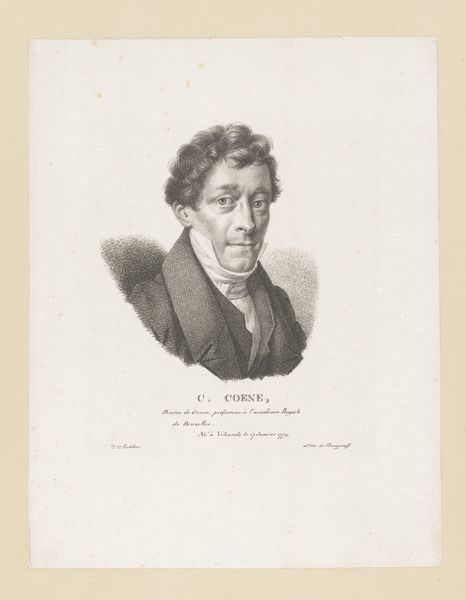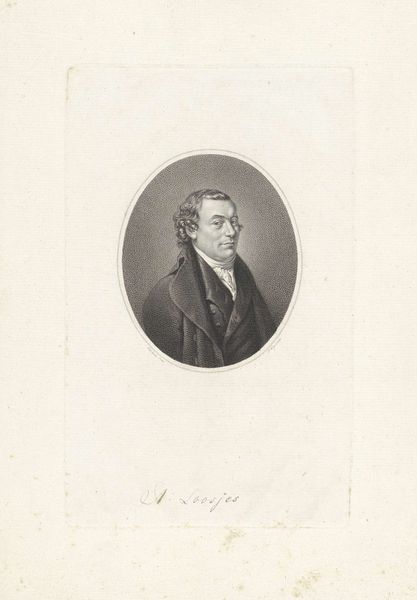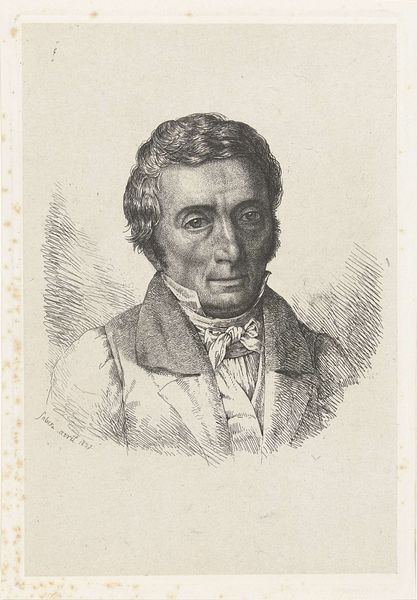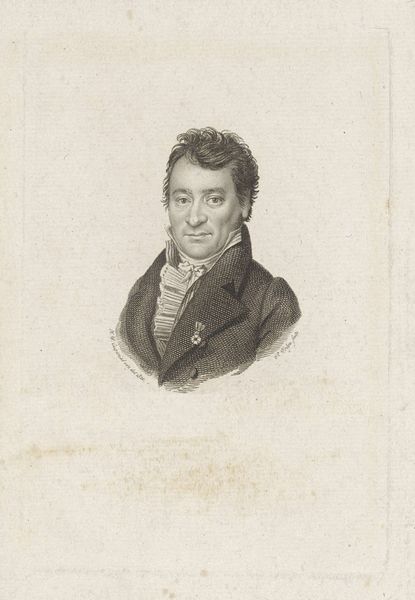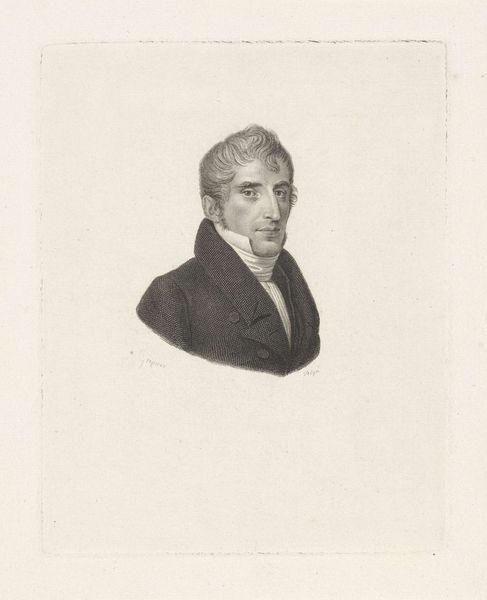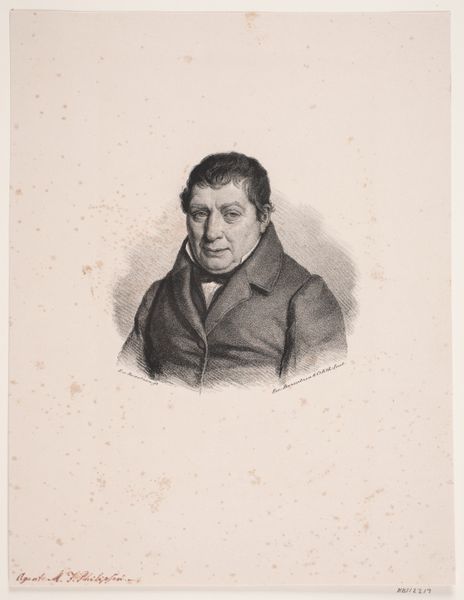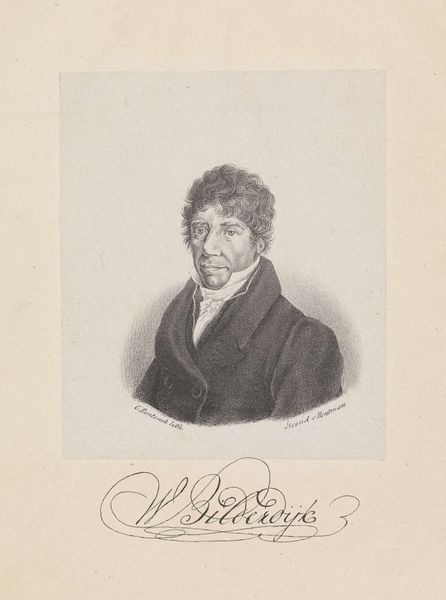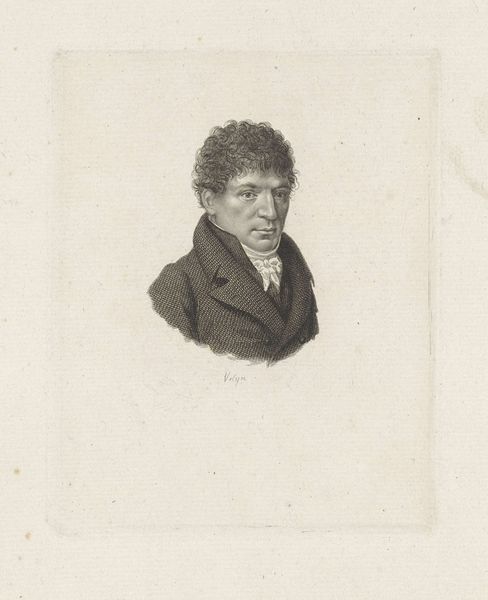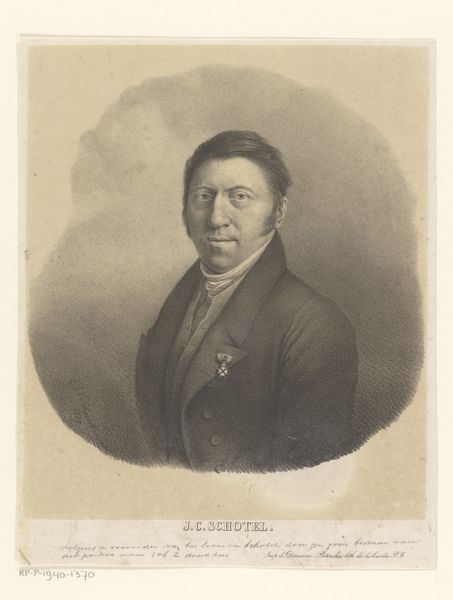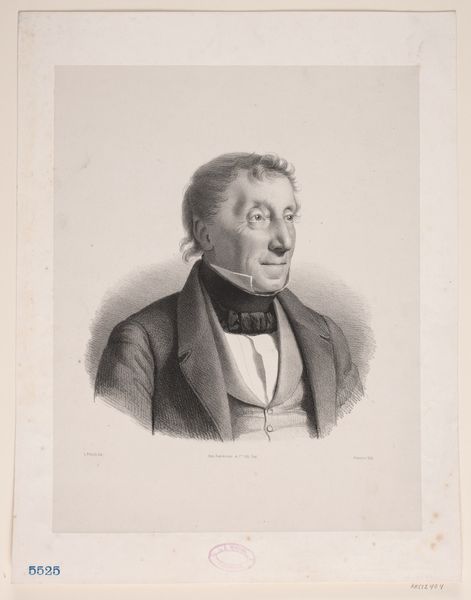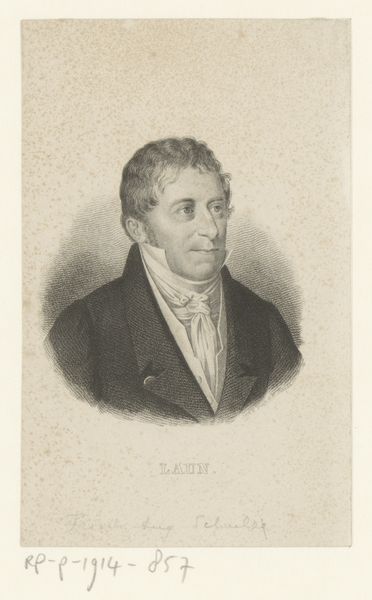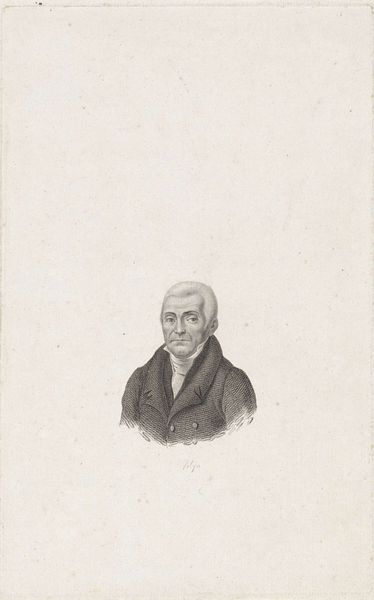
#
wedding photograph
#
photo restoration
#
historical photography
#
portrait reference
#
pencil drawing
#
old-timey
#
yellow element
#
limited contrast and shading
#
portrait drawing
#
celebrity portrait
Dimensions: height 142 mm, width 111 mm
Copyright: Rijks Museum: Open Domain
Curator: This is a portrait of Hendrik Meyer, crafted in 1829 by Philippus Velijn. There's a certain stillness to it, a reserved quality. Editor: It feels quite austere, doesn’t it? The muted tones and very contained composition definitely speak to a specific set of aesthetic and social values. Almost… prudish, but perhaps that’s projecting! Curator: Well, think about the material conditions here. Printmaking was increasingly industrialized, and portraiture served a vital social function for a burgeoning middle class seeking ways to visualize and assert its status. Editor: That's an interesting point, but looking purely at its form, the fine lines create a network across the entire surface of the work. It is like a kind of screen—filtering the gaze between the viewer and Hendrik Meyer. Notice how the use of hatching and cross-hatching models his face. Curator: Exactly, this was likely mass-produced in some format to represent power or solidify political gain by displaying people in powerful positions within the changing landscape of society. Printmaking, especially portraiture, became intertwined with colonial projects as representations of colonizers went home or of locals were produced for scholarly documentation or dehumanization. Editor: Absolutely, but aesthetically, there’s a compelling tension created by that contrast. The smooth, idealized planes of his face stand in sharp contrast to the tightly packed patterns forming the textures of his clothing and hair. The piece holds this intriguing oscillation. Curator: The uniformity of the hatching marks perhaps alludes to the mechanization and routinization of labor within workshops and factories to mass-produce art during that era? I wonder, too, about the paper used and if there are clues about where it came from! Editor: Thinking about semiotics of his expression alone can lend some meaning. Is his serious look a reflection of wealth, or perhaps an ideal about power from that time? And why does his tightly tied, flowing necktie not quite balance the weight and structure of his strong coat? What’s that communicating formally? Curator: Right. Understanding the labor and materials interwoven here unlocks many answers. It humanizes Hendrik and perhaps gives agency to Velijn for his decisions within this time in history. Editor: Looking at this print, my appreciation is for the dialogue created by its subtle tension and contrast. Curator: Indeed. Considering its production opens dialogues on who this portrait served, while understanding how art was changing into what we know of art today.
Comments
No comments
Be the first to comment and join the conversation on the ultimate creative platform.
